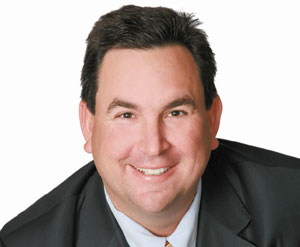Positive moves to counteract negative cash flow. In July, a New
York Times article mentioned that half of American families were
carrying more than $25,000 in debt.
Positive moves to counteract negative cash flow. In July, a New York Times article mentioned that half of American families were carrying more than $25,000 in debt. Of course, some of this can be attributed to mortgages. But the borrowing doesn’t stop there.
Every day, people draw on money they don’t actually have – via credit cards, payday loans, home equity lines of credit, and even their 401(k)s. Many of them end up making minimum payments on these high-interest loans – a sure way to stay indebted forever.
If this is your situation, you may be wondering how do you get out of debt?
Let me give you some ideas.
Make a budget. “Where does all the money go?” If you are asking that question, here is where you learn the answer. You might find that you’re spending $80 a month on energy drinks, or $100 a week on lousy movies. Cable, eating out, buying retail – costs like these can really eat at your finances. Set a budget, and you can stop frivolous expenses and redirect the money you save to pay down debt.
Get another job. I know, this doesn’t sound like fun. But having more money will aid you to reduce debt more quickly. A family member who isn’t working can work to help reduce a shared family problem.
Sell stuff. The Internet has proven that everything is worth something. Go to eBay, craigslist or Kijiji – you’ll be amazed at the market (and the asking prices) for this and that. What people collect, want and buy may surprise you. Don’t be surprised if you have a few hundred dollars – or more – sitting around your house or in your garage. You might be able to pay off a couple of credit cards – or even a loan – with what you sell.
Ditch the big car payment and drive a cheaper car that gets good MPG. Say goodbye to the monster SUV (or the overpriced sports coupe). Get a car that makes sense instead of a statement. Your wallet will thank you.
Pay off all debts smallest to largest. The benefits are psychological as well as financial. Knock off even a small debt, and you have an accomplishment to build on – encouragement to erase bigger debts. Also, every debt you have incurs its own interest charge. One less debt means one less interest charge you have to pay.
Or, pay off your highest-interest debts first. Take a minute to figure out which of your debts hits you with the highest interest rate. Pay the minimum amounts toward each of your other debts, and apply all the extra money you can toward paying off the debt with the highest interest.
This will have a cumulative effect. Your highest-interest debt will become smaller, meaning you will be saving some dollars on interest charges on the balance because the balance is lower. If the balance is lower, you should be able to pay off the debt faster. When you say goodbye to that debt, you can start paying down the debt with the next highest interest, and so on.
Keep the real goal in mind. Building wealth, not reducing debt, should be your ultimate objective. Some debt reduction and debt consolidation planners obsess on getting you out of debt, but that is only half the story. Minimizing debt is great, but maximizing wealth is even better.
You can plan to build wealth and reduce debt at the same time. If you have a relationship with a financial advisor, you might be able to do it in the same unified process.
Why just keep debt at bay when you can leave it behind? Do yourself a favor and talk with a good financial advisor who can show you ways toward financial freedom.










